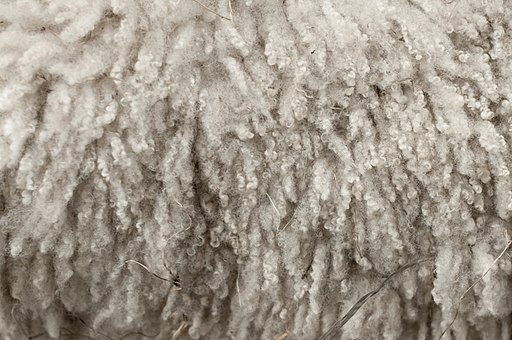Staple Fiber

Image: Wool fiber. Credit: Rob / CC BY
A fiber is one of primary building blocks of textiles, it describe a material with a high length to width ratio. A staple fiber has a limited length while filaments have unlimited length. Staple fibers are categorized into categories based on their source and chemical properties:
Natural fibers are those that come from animals and plants. The size and length of staple fiber thus depends on what can be grown and harvested.
- Protein fibers are harvested from animals (sheep, goats, alpaca) and insects (spiders, caterpillars).
- Cellulose fibers are sourced from plants (linen, cotton, etc). Many of these are considered "bast" fibers which derive from the long fibrous structures within the stem.
Synthetic fibers are often created from polymer solutions. They are made into long filaments through processes of extrusion, then cured or otherwise hardened into a continuous material. Synthetic staple fibers are then made by cutting the longer filaments into shorter pieces.
- Metallic fibers are a category we have added to include conductive yarns into this resource. Some metals can be shaped into the form of staple fibers through processes of shredding or rolling into filaments and cutting.
Staple fibers are prepared and given twist to turn them into yarns. In other cases, they are entangled directly to make fabric, without passing through the yarn state. When made into yarn, their structure (lots of little fibers tangled in a row) often provides them with the ability to hold air and stretch. As such, yarns made from staple fibers may feel softer and springier than yarns made from a continuous filaments.
Primary Measurements
- type: the source of the fiber
- staple length: the length of the fiber, measured in mm
- fiber diameter: the cross-sectional diameter of the fiber, measured in µm
- crimp: the overall shape of the fiber, some have kinks and crimps